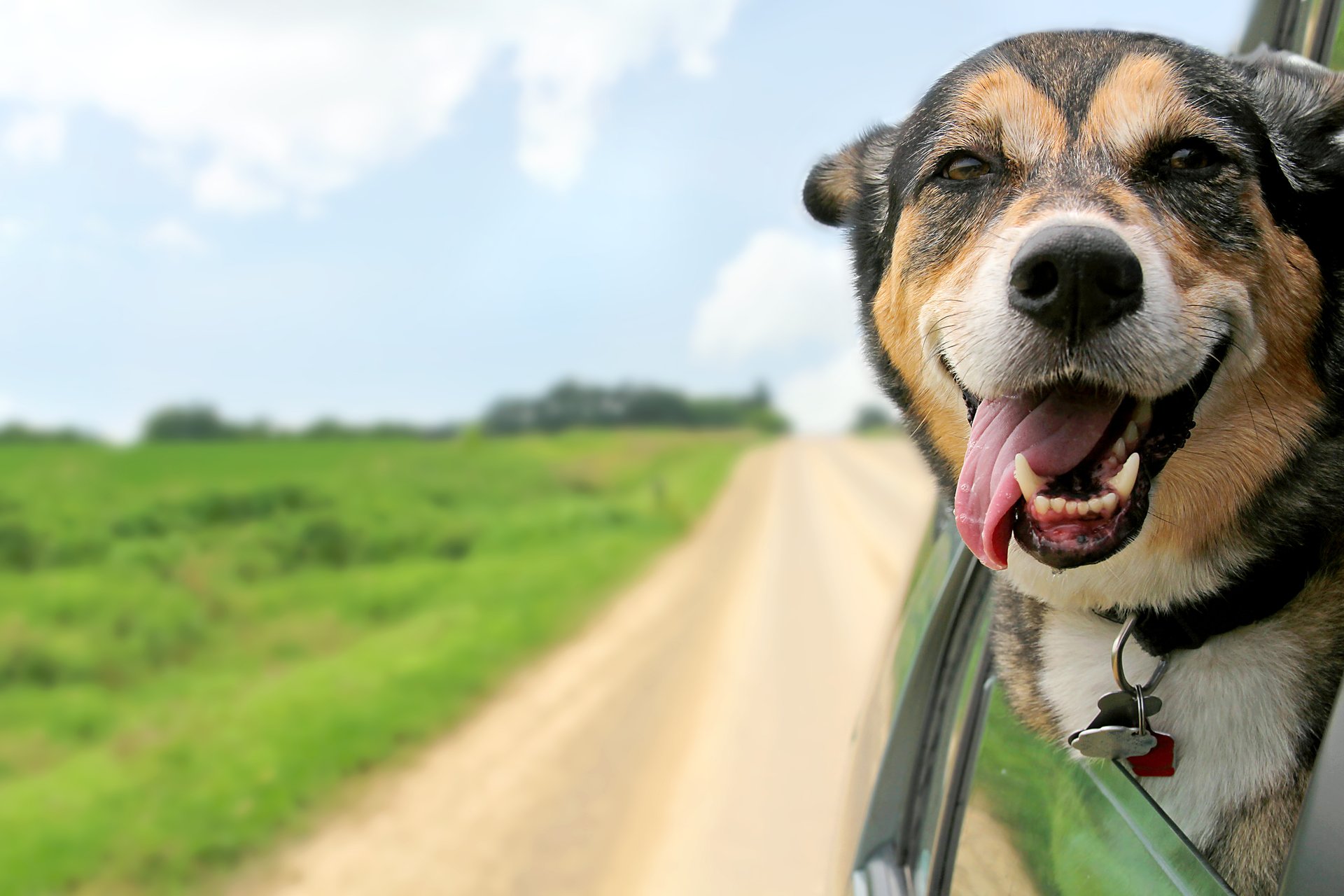
I saw the dog jump from the back seat to the front just as the woman drove her car into mine.
Fortunately we were both traveling slowly on the private road in front of our homes, so no one was injured (and the cute white poodle in her car was OK, too!). The driver admitted she didn’t secure the dog because she was only traveling a short distance — from the vet! — when we crashed.
It’s easy to tsk about this, but let’s be honest. All pet owners know that we shouldn’t take chances like that, but most of us do. And of course having a pet roaming the car is distracting.
Distracted driving was blamed for more than 3,000 deaths and about 431,000 injuries in motor vehicle crashes during 2014, according to Distraction.gov, a government website dedicated to preventing distracted driving.
Of course, distracted driving means anything that takes attention away from the road — texting, adjusting the radio, eating. So why the fuss about shorter trips with much-loved pets?
Unsecured animals can create such force during a crash that they can injure or kill those inside. Doubt it? “An unrestrained 10-pound dog in a crash at 50 mph will exert roughly 500 pounds of force, while an unrestrained 80-pound dog in a crash at only 30 mph will exert approximately 2,400 pounds of force,” notes a report by AAA and Kurgo.
And even if you and others escape injury-free, no one wants to see their animal killed or hurt in a way that could be easily prevented.
How to be safe
Before you and your beloved pet hop in the car for a spin, consider these ideas to ensure both of you have a safe journey:
LATCH systems are for pets too. Most rightly think of cars’ LATCH (Lower Anchors and Tethers for Children) restraint systems as ways to secure car seats for kids, but they’re also handy to secure hard- and soft-sided pet crates. Pet seats or basket holders can be used with smaller animals, notes AAA. Harnesses also can be secured LATCH systems. Survey respondents told AAA that most (84 percent) travel by car with their pets, but only 16 percent used any restraint.
Don’t rely solely on a barrier system. There are many that fit into different vehicles and do cut down on distractions, but AAA reminds us that they don’t offer our pets or us protection during a crash.
Put cages and restrained animals in the back seat. Air bags can seriously hurt of kill your pet. The experts at Doctors Foster and Smith note birds’ travel cages should be secured by seat belts or a LATCH system, too. And don’t put any hard or swinging objects in the cage. Those can injure the bird during a hard stop.
Keep cats in larger travel carriers. You want to make sure the carrier (again, securely fastened) allows them to stand up and turn around. Also, don’t forget to line the carrier with a towel and tiny litter tray, reminds PETA. Think your cat will be OK unrestrained when you stop? “We have never heard of a dog getting caught in the springs under a seat or having to be cut out of the metalwork over the wheelbase, but both things frequently happen to cats,” warns PETA.
Don’t use a box. A cardboard box will offer almost no protection for your pet or you if there is a crash, reminds PETA. Also stronger animals can easily break out of boxes. Invest in a carrier.
Tag your pet. Many pets have microchips implanted in their skin, but it’s still a good idea to have your traveling pet wear a collar with a tag that states your home address and telephone numbers, recommends Edmunds. When you travel, make sure you have a recent photo of your pet in case it becomes lost.
Secure animals at rest stops. Want to give your pet a breath of air? Countless unrestrained dogs, cats and other animals have been lost and killed at tollbooths and rest stops when well-meaning owners opened windows, notes PETA. Unrestrained animals will jump out at fast food places and in front of your friends’ houses too. Don’t risk it.
Play soft music. This is not the time to pump up the heavy tunes. Soft classical music drowns out some of the road noise and will calm your pet, advises PETA.
Carry all their supplies. Water, food, toys and other essentials might not seem necessary for short trips but they’re crucial for pets. You never know if you’ll be delayed or your car will break down. Prepare so your pet doesn’t suffer.
What’s your experience traveling with pets in the car? Share with us in comments below or on our Facebook page.




Add a Comment
Our Policy: We welcome relevant and respectful comments in order to foster healthy and informative discussions. All other comments may be removed. Comments with links are automatically held for moderation.